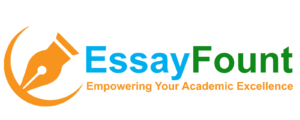
Scenario Introduction You are a qualified fabricator and welder; you have been asked by your foreman to carry out some consultation work for an external company wishing to investigate processes and methods a report that can be used by possible apprentices as a ‘guide to’: Primary arc welding processes Production of welded fabrications The foreman has asked you to use practical examples of the work you have been carrying out as a welder and fabricator to add to your findings. Task 1a: (LO1: 1.1) (+700 words) Discuss the formability of metals with regards to sheet metal forming process. In your response you must include the following: Properties (planar and anisotropic). Thickness of metal. Bi-axial stress. Task 1b: (LO1: 1.2) (+700 words) Describe sheet metal forming processes. In your response, choose two of the following: Axisymmetric forming processes: spinning and flow turning. Stretch forming: applications. Press braking: types of press brake, mechanical, hydraulic, up stroking and down stroking, including comparison of press braking with other forming processes. Press brake tooling, tools for coining and air bending, swan necks soft pads, bead forming, offsets, and unit tooling. Calculations of Vee die opening, bend radius blank length, punch force and bend sequence. The application of CNC to press brake forming. Press die forming: principles of press forming and components used in typical press tool assemblies. Calculation of blank size, clearance value and punch tonnage for simple pressings and the selection of lubricants for specific presswork. Faults occurring with press work, and identification of critical regions of stress. Task 1b: (LO1: 1.3) (+700 words) Compare HERF with other sheet metal forming processes. Your response should include: Definition of high energy rate forming Methods of and the applications of: Electro Hydraulic forming Electro Magnetic Forming Explosive Forming You will be expected to compare HERF processes with themselves and conventional forming processes. Task 1c: (LO1: 1.4) Apply numerical methods to sheet metal forming to calculate blank size, draw ratios and press tonnages. A cup has an inside diameter of 115 mm and is drawn to a depth of 100 mm. The cup is to be drawn from a sheet of steel that has a thickness of 0.9 mm and an ultimate tensile stress of 450 N/mm2. The cup cannot be drawn in a single draw so a second-stage draw will be required. The following data has been made available to you. Thickness ratio ((t/D) x 100) Maximum drawing ratio (D/d) 0.15 1.43 0.20 1.54 0.30 1.67 0.40 1.82 0.50 1.91 Greater than 0.5 2.00 Table 1 Equation 1 – + 4dh) Equation 2 – Thickness ratio = x 100 Equation 3 – P = 1.3 σt π t [D – d] Assuming that no change in metal thickness occurs, Calculate the following: i)The initial blank diameter. ii)The safe drawing ratio for the first draw. iii)The blank diameter for the first draw. iv)The draw ratio for the second stage draw. v)An approximate value, in tonnes, for the press capacity required for the first draw.3 Task 2a (LO2: 2.1) (+700 words) Discuss joining methods for sheet metal Self-secured (for commercial mechanised manufacture) Patented sheet metal captive fasteners Design features Applications Task 2b (LO2: 2.2) (+700 words) Discuss bolting procedures, include the following in your response: Fastening sequences Assembly aids e.g. tack bolting Methods of tightening high strength friction grip bolts Task 2c (LO2: 2.3) (+700 words) Explain how structural sections are joined, include the following in your response: Calculation of joining plate dimensions Determination of depth between flanges from standard section tables Task 3a (LO3: 3.1) (+700 words) Analyse cutting methods used in fabrication, in your response identify several relevant factors, show how they are linked, and explain the importance of each. Use the following as guidance Thermal cutting: oxy fuel gas cutting (equipment, fuel gases, procedures); exothermic reaction; cutting techniques; cutting aids; mechanised oxy-fuel cutting; tracked cutting machines; pantograph and cross carriage type cutting machines; CNC cutting. Arc plasma cutting: plasma theory; plasma cutting equipment, techniques; arc air gouging; other cutting processes. Mechanical cutting: cutting by shear eg powered guillotines, treadle guillotines, rotary shears, hand held nibbler shearing machines; Punching theory); hand held nibbler punches; punching machines; calculation of punching force; sheet metal punching methods eg punching, blanking, notching, slitting; close tolerance punching of sheet metal components; chip forming processes eg drilling, power drills, sensitive drilling machines, radial arm drills, powered reciprocating hacksaws, band saws; abrasive cutting machines eg circular saws.
The post Introduction You are a qualified fabricator and welder; you have been asked by your foreman to carry out some consultation work for an external company appeared first on Homework Aider.
What Students Are Saying About Us
.......... Customer ID: 12*** | Rating: ⭐⭐⭐⭐⭐"Honestly, I was afraid to send my paper to you, but you proved you are a trustworthy service. My essay was done in less than a day, and I received a brilliant piece. I didn’t even believe it was my essay at first 🙂 Great job, thank you!"
.......... Customer ID: 11***| Rating: ⭐⭐⭐⭐⭐
"This company is the best there is. They saved me so many times, I cannot even keep count. Now I recommend it to all my friends, and none of them have complained about it. The writers here are excellent."
"Order a custom Paper on Similar Assignment at essayfount.com! No Plagiarism! Enjoy 20% Discount!"

